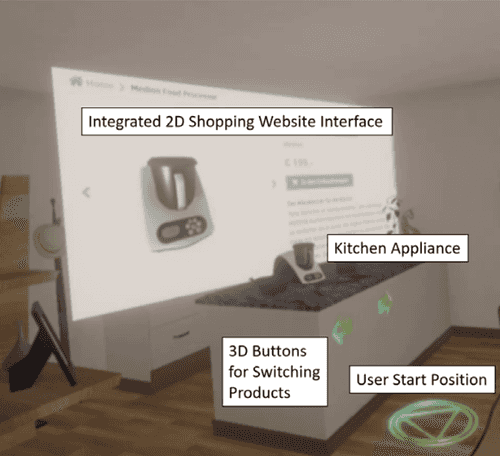Comparing low sensory enabling (LSE) and high sensory enabling (HSE) virtual product presentation modes in e‐commerce

Abstract
Online shops have become increasingly interactive, using different technologies to create virtual experiences that attempt to simulate a realistic product experience. We explore the impact of high sensory enabling (HSE) virtual product presentation modes using state-of-the-art virtual reality (VR) technology that allows consumers to imitate natural movement and interactions via head-mounted displays (HMD) and dual hand VR controllers. This will compare the HSE virtual product presentation mode with a typical low sensory enabling (LSE) virtual product presentation mode that utilises conventional computer screens, along with mouse and keyboard inputs, on a desktop computer. For the HSE virtual product presentation mode, the results show significantly higher values for the studied variables, including presence, perceived diagnosticity, attitude towards product, and purchase intention. Shopping frequency has a moderating effect on the significant differences of presence between presentation modes. Our research contributes to theory by building on attitude theory, cue summation theory, as well as repetitive learning and memory to explore and explain the effects of HSE virtual product presentation modes on the constructs considered. For managers and industry leaders, this study identifies the importance of using state-of-the-art technology when creating HSE virtual experiences for their products.
Information
Authors
Arno Kinzinger, Winfried Steiner, Markus Tatzgern, Christine Vallaster
Publisher
Information Systems Journal
Year of Publication
2022
Bibtex
Link
Open link to paper